Sometimes constipation shows up at the worst times, and let’s be honest, it can make you feel heavy, bloated, and just plain uncomfortable.
I’ve been there too, wondering how to get unconstipated fast without relying on medicine. That’s where yoga can make a real difference.
Gentle movements and stretches can help wake up your digestive system, ease tension, and promote natural digestion.
In this blog, I will share simple yoga poses for constipation that you can do right at home. Think of them as easy stretches for constipation that bring relief while also calming your mind.
With a little practice, these poses can become your go-to routine whenever you need some natural digestive support.
How Yoga Helps Digestion?
Yoga supports digestive health through two primary pathways that work in harmony.
First, the physical poses create mechanical benefits, twists gently massage your internal organs, forward folds compress the abdomen to stimulate digestion, and inversions can help with gas and bloating. These movements literally get things moving in your digestive tract.
But the magic really happens with yoga’s effect on your nervous system. The deep breathing and mindful movement activate your parasympathetic nervous system; your “rest and digest” mode.
Research shows that yoga’s stress-reducing effects, combined with its ability to improve vagal tone, create an optimal environment for healthy gut function.
Clinical studies have confirmed that three-month yoga interventions significantly improve constipation and sleep-related quality of life in elderly populations, demonstrating yoga’s profound impact on digestive wellness.
Safety First: Who Should Avoid Certain Poses?
While yoga is generally safe for digestive health, certain conditions require special attention. Always listen to your body and modify poses as needed.
- Pregnancy: Avoid deep twists, intense backbends, and prone positions; use props like bolsters and practice gentle, supported variations instead.
- Recent abdominal surgery: Skip core-intensive poses and deep twists for at least 6-8 weeks post-surgery, focusing on gentle breathing exercises and light movement.
- Severe IBS flare-ups: Avoid intense twists and inversions during active symptoms; gentle forward folds and child’s pose are safer options.
- Hernias: Steer clear of poses that increase abdominal pressure, like boat pose or intense core work; use props to support your body weight.
- Active inflammatory conditions: Skip vigorous sequences during IBD flares or severe gastritis; gentle restorative poses and meditation are better choices.
Remember, yoga should complement, not replace, medical treatment for digestive issues. If you experience persistent pain, bleeding, or worsening symptoms, consult your healthcare provider before continuing any yoga practice.
Best Yoga Poses for Constipation
These yoga poses gently massage the stomach, improve circulation, and calm the body, making them simple, natural ways to ease constipation and support healthier digestion every day.
1. Wind-Relieving Pose (Pawanmuktasana)
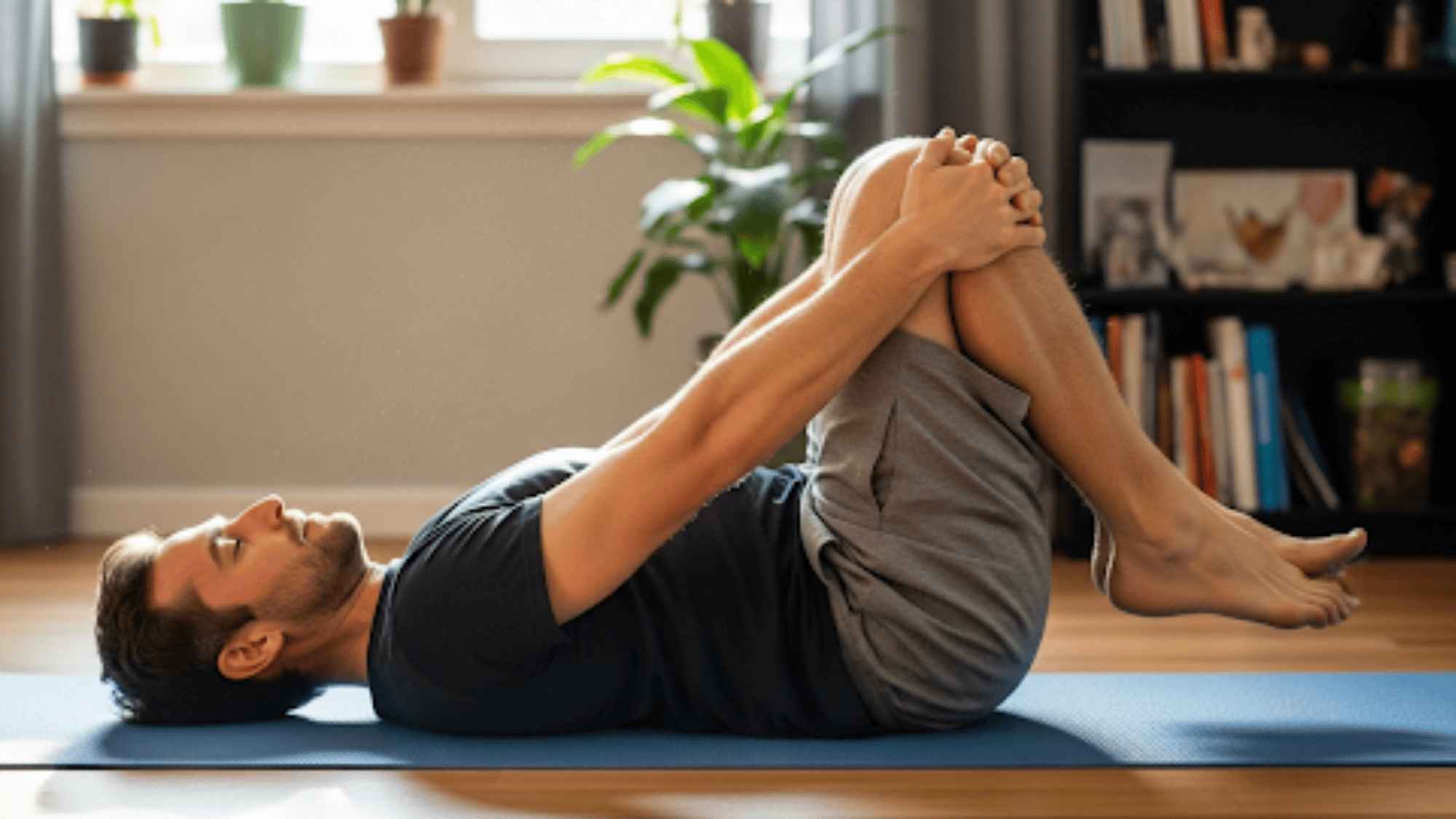
This gentle pose literally translates to “wind-releasing pose” and is excellent for relieving gas, bloating, and digestive discomfort.
Compressing the abdomen and massaging internal organs stimulates digestion and helps release trapped air from the intestines, providing immediate relief from abdominal tension.
How to Perform
- Step 1: Lie flat on your back with legs extended and arms at your sides, taking a few deep breaths to relax.
- Step 2: Bend your right knee and draw it toward your chest, clasping your hands around your shin or behind your thigh.
- Step 3: Keep your left leg straight and pressed into the floor, holding for 30-60 seconds while breathing deeply.
- Step 4: Release your right leg, extend it back down, then repeat the same sequence with your left leg and both legs together.
2. Seated Forward Bend (Paschimottanasana)
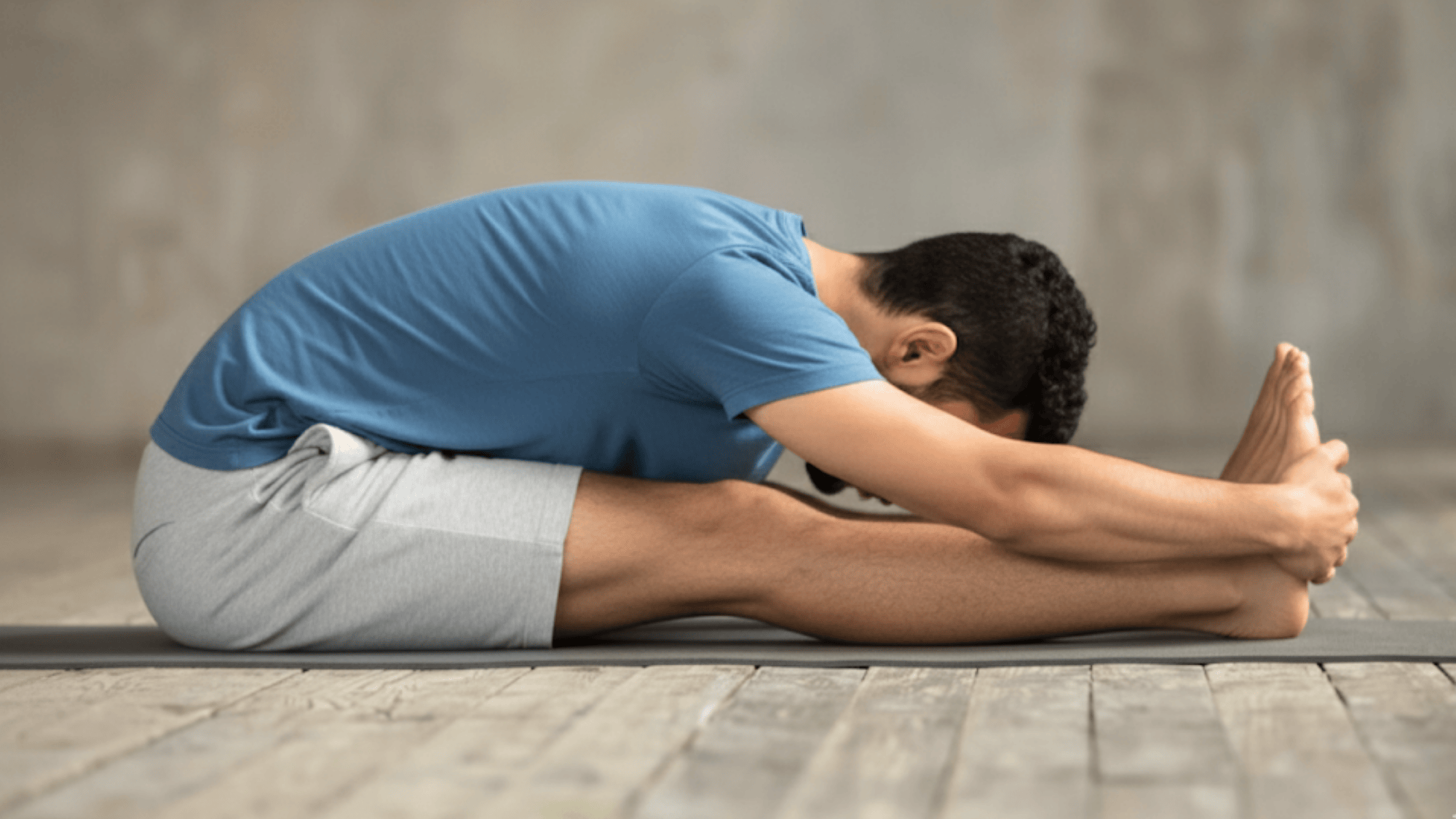
This calming pose stretches the spine and hamstrings while massaging the abdominal organs, which supports digestion and helps to relieve mild constipation naturally.
It also increases blood circulation to the stomach, reduces stress, and calms the mind, making it a powerful pose for both physical and emotional balance.
How to Perform
- Step 1: Sit on the floor with your legs extended straight forward and your spine upright, engaging your core muscles for better alignment.
- Step 2: Inhale deeply, lengthen your spine upward, and gently broaden your chest while preparing to fold your body forward.
- Step 3: Exhale slowly, bending from your hips, and reach your arms toward your feet or shins, going as far as comfortable.
- Step 4: Maintain the position for 30–60 seconds, breathing slowly and deeply, allowing the stretch to release tightness in your back and hamstrings.
3. Cat-Cow Stretch (Marjaryasana-Bitilasana)
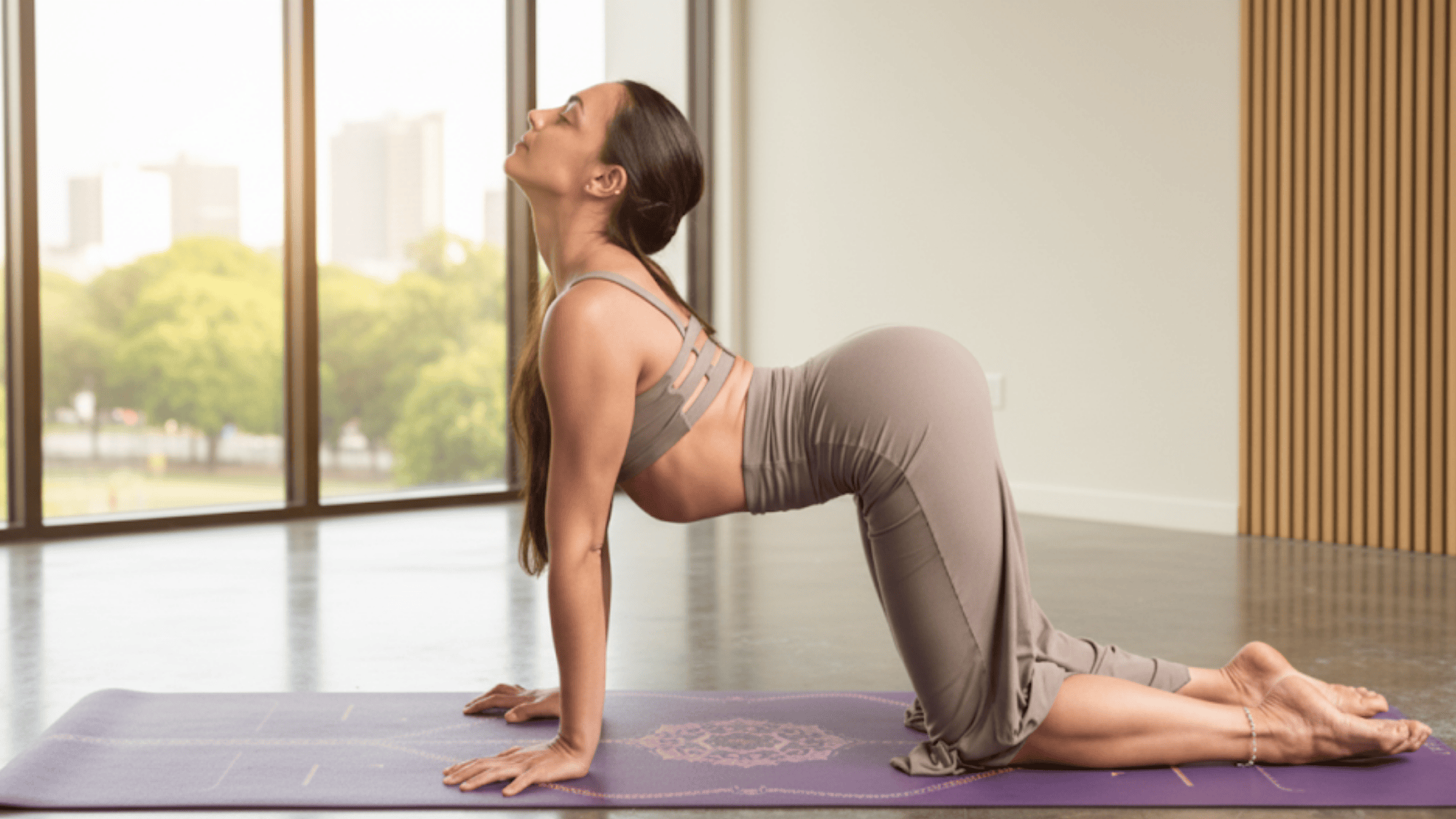
This gentle spinal flow relieves stiffness, massages the abdominal organs, and boosts blood circulation, all of which improve digestion and reduce belly discomfort.
The rhythmic breathing helps calm the nervous system, release stress, and improve posture, making it an excellent warm-up or relaxation practice for the spine.
How to Perform
- Step 1: Start on your hands and knees, ensuring your wrists are directly under your shoulders and knees beneath your hips for proper support.
- Step 2: Inhale as you drop your belly downward, lift your chest forward, and raise your gaze, creating a gentle arch through the back (cow pose).
- Step 3: Exhale fully, round your spine upward, and tuck your chin toward your chest, stretching the back of your neck (cat pose).
- Step 4: Continue flowing between these two poses for 8–10 rounds, coordinating each movement with slow, controlled breathing for the best effect.
4. Supine Twist (Supta Matsyendrasana)

This restorative twist stretches the lower back and gently massages the intestines, promoting smoother digestion and easing trapped gas or abdominal heaviness.
It also improves blood flow to the digestive system, relaxes the spine, and releases stress, making it ideal for evening practice before rest.
How to Perform
- Step 1: Lie comfortably on your back with arms relaxed at your sides, keeping your spine straight and shoulders soft.
- Step 2: Bend both knees and slowly draw them toward your chest, holding briefly to relax the lower back muscles.
- Step 3: Drop both knees together to one side while keeping your shoulders pressed into the mat, and extend your arms out wide.
- Step 4: Hold for 30–60 seconds, breathing deeply, then gently return to the center and repeat on the opposite side for balance.
5. Child’s Pose (Balasana)
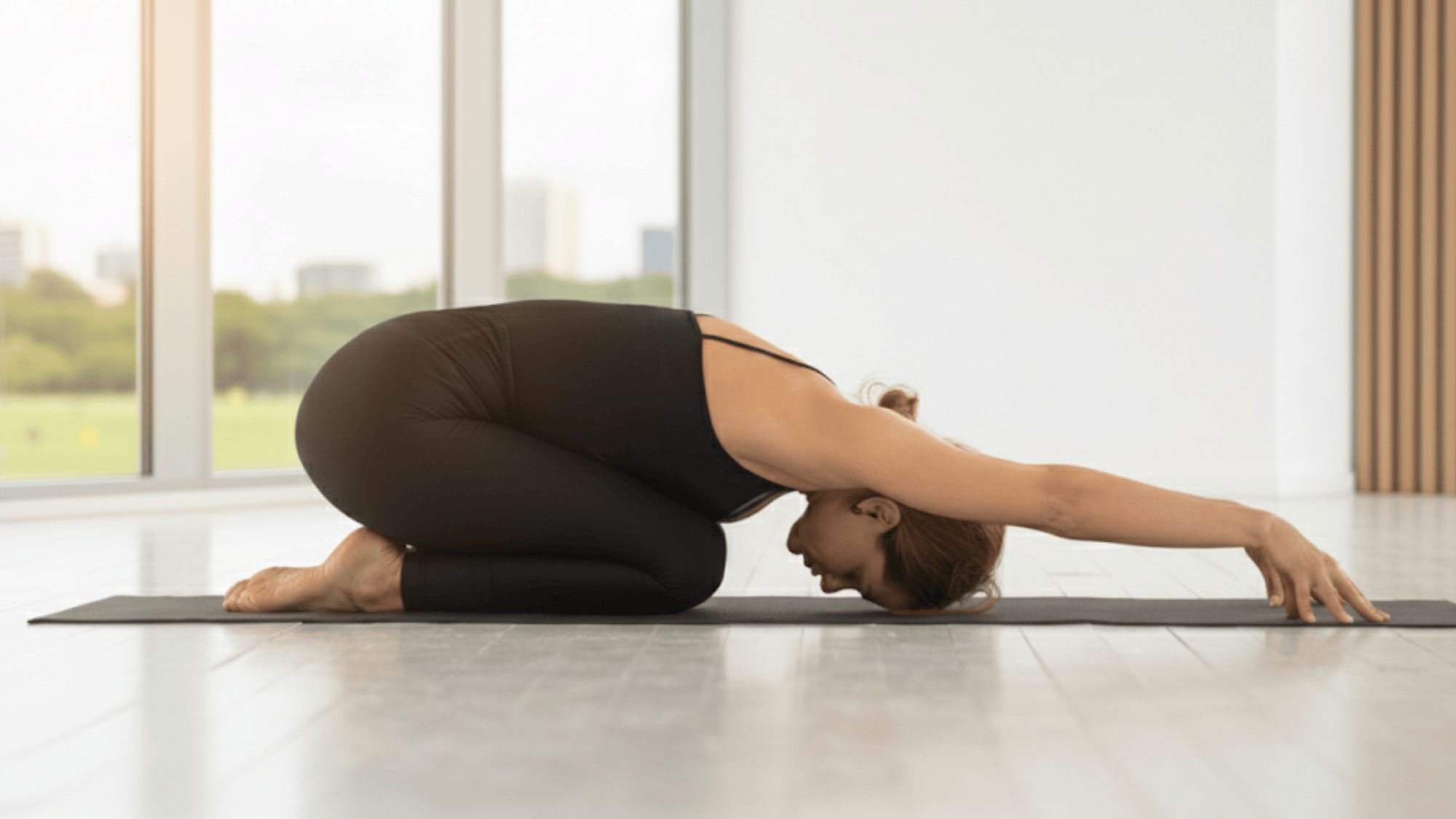
This grounding and restful posture gently compresses the abdomen, stimulating digestion while calming the mind and soothing the nervous system.
It is also excellent for releasing tension in the hips, back, and shoulders, providing both physical relief and emotional relaxation during practice.
How to Perform
- Step 1: Kneel on the floor with your big toes touching and your knees spread apart comfortably for balance.
- Step 2: Sit back onto your heels, allowing your body to settle into a stable and relaxed position.
- Step 3: Fold your torso forward, stretching your arms straight ahead with palms down, lengthening the spine as you lower.
- Step 4: Rest your forehead on the mat and breathe deeply, holding for as long as feels comfortable to encourage relaxation and digestion.
6. Bridge Pose (Setu Bandhasana)
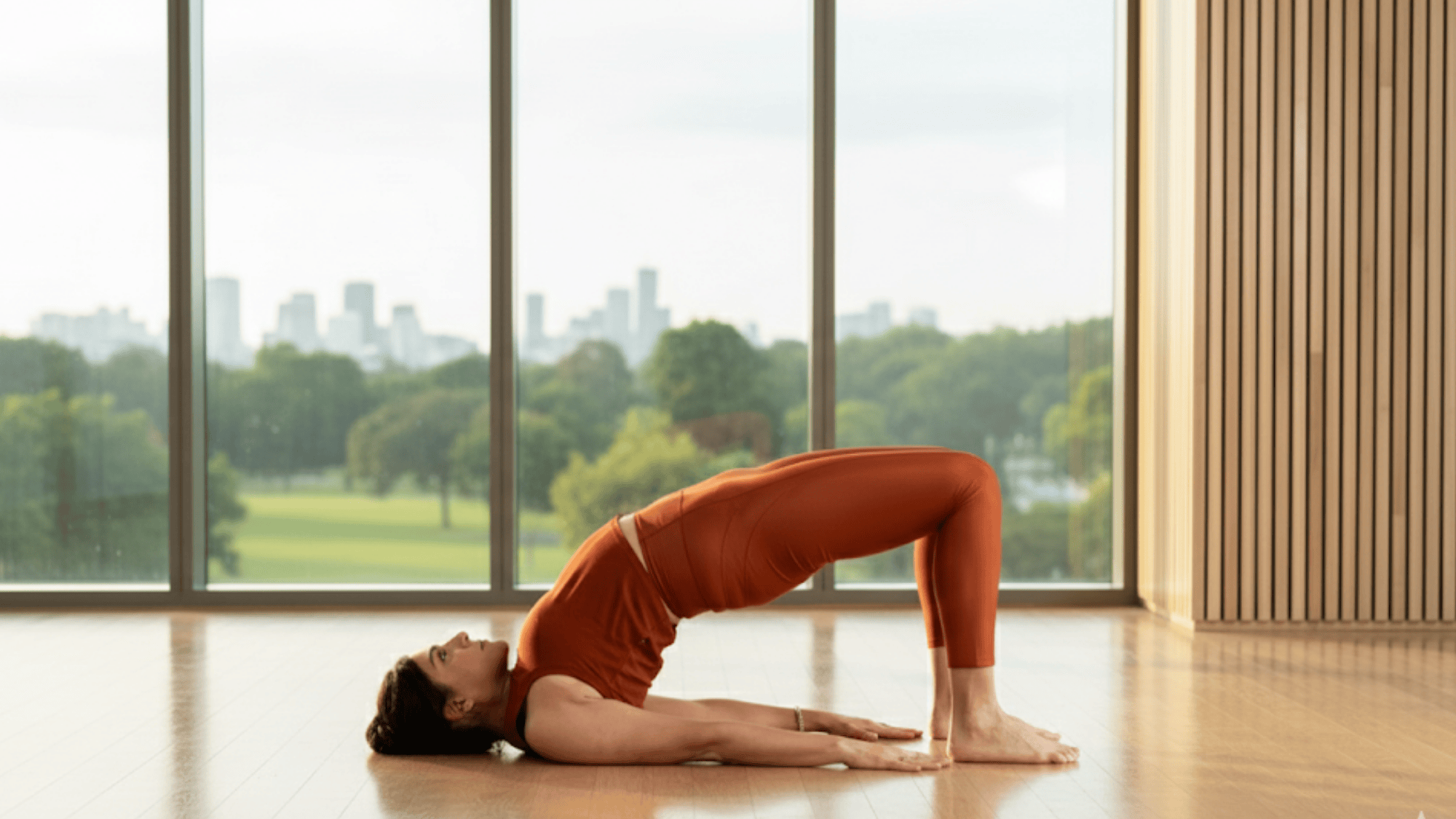
This strengthening backbend activates the core, stretches the belly, and stimulates digestive organs, helping to reduce bloating and improve circulation.
It also relieves lower back tension, energizes the body, and builds stability in the legs while gently supporting digestion through abdominal engagement.
How to Perform
- Step 1: Lie flat on your back with knees bent and feet hip-width apart, keeping your heels close to your sitting bones.
- Step 2: Place your arms at your sides with palms pressing into the floor for stability.
- Step 3: Inhale deeply, press your feet into the mat, and lift your hips upward, forming a bridge shape.
- Step 4: Hold for 20–40 seconds, breathing deeply, then lower your hips slowly back down to the floor.
7. Cobra Pose (Bhujangasana)
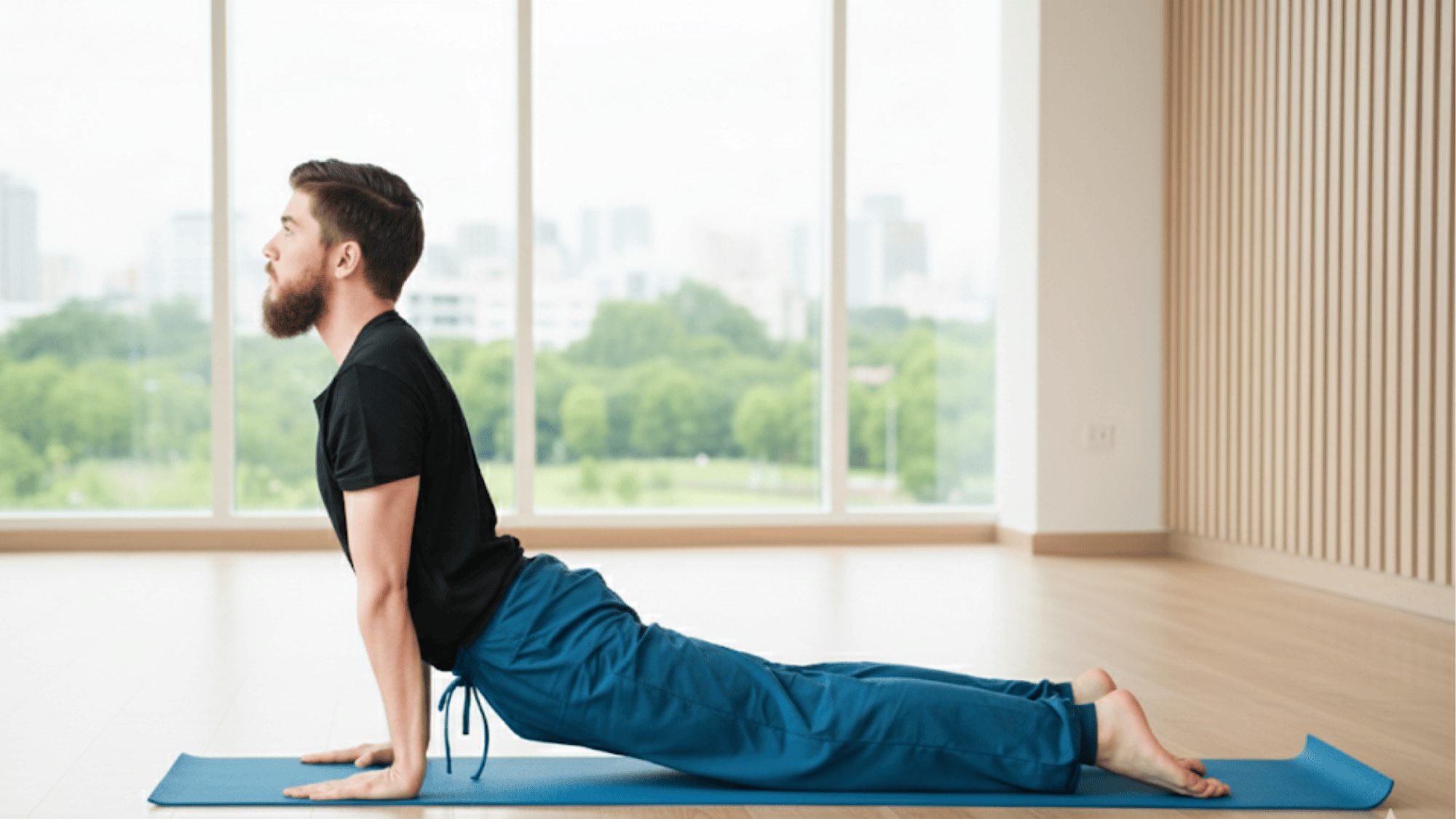
This gentle backbend stretches the abdominal muscles, stimulates blood flow to the digestive organs, and relieves constipation while boosting energy.
It also strengthens the spine, improves posture, and reduces fatigue, making it a refreshing pose for both digestion and overall wellness.
How to Perform
- Step 1: Lie face down on the mat with your legs extended, the tops of your feet pressing firmly into the ground.
- Step 2: Position your palms directly under your shoulders, elbows tucked close to your torso for balanced alignment.
- Step 3: Inhale deeply, press your palms together, and gently lift your chest upward, lengthening through the spine.
- Step 4: Hold the position for 20–30 seconds, breathing evenly, then slowly lower your chest.
8. Happy Baby Pose (Ananda Balasana)
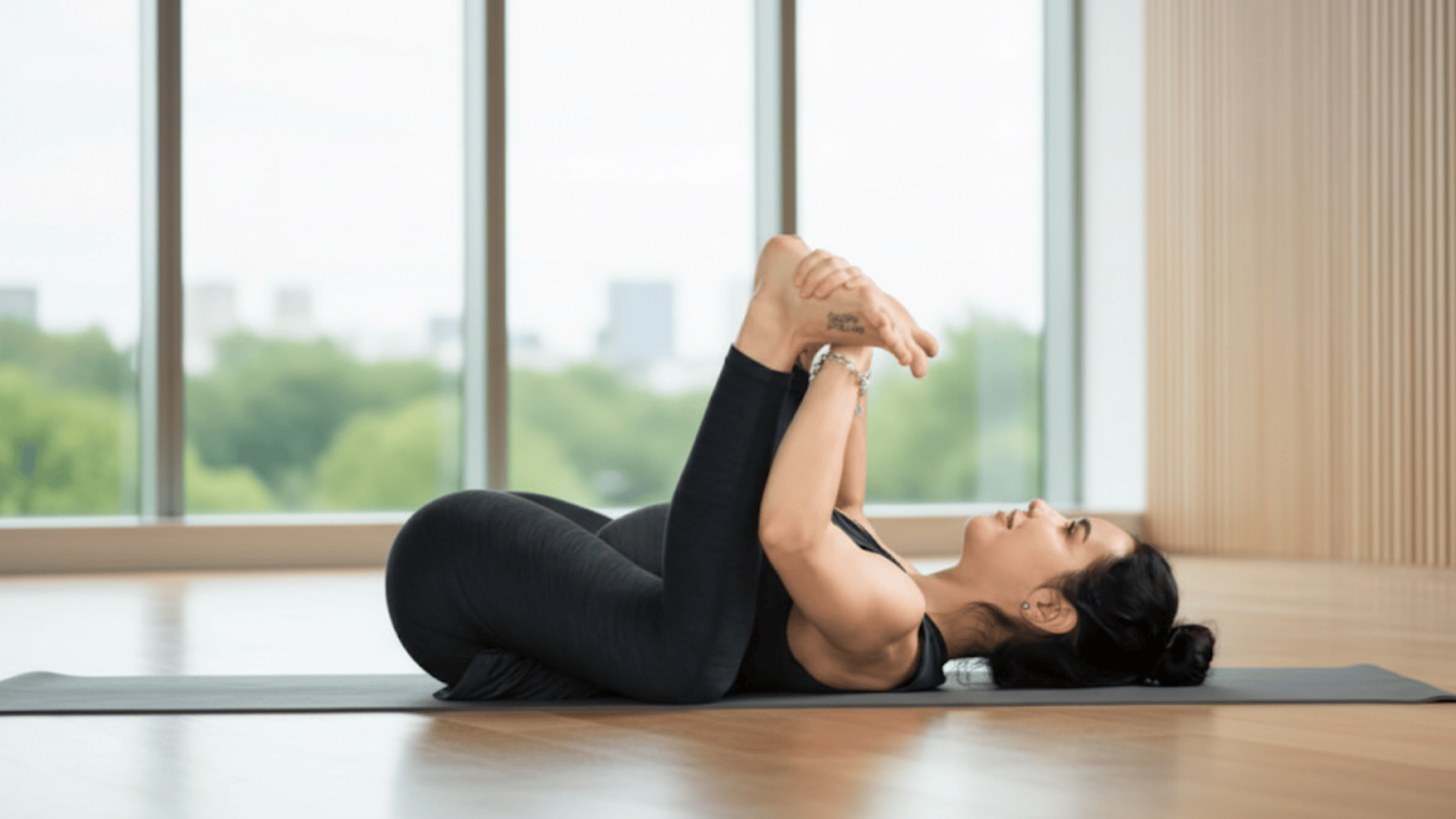
This playful posture relaxes the hips and massages the belly, reducing bloating and gas by improving circulation around the digestive organs.
It also soothes the nervous system, stretches the lower back, and encourages relaxation, making it excellent for easing tension in both body and mind.
How to Perform
- Step 1: Lie on your back and draw your knees toward your chest.
- Step 2: Reach your hands up and hold the outer edges of your feet firmly.
- Step 3: Keep your ankles above your knees and gently pull your legs downward toward the floor.
- Step 4: Rock side to side slowly, breathing deeply, and stay for 30–60 seconds to massage your lower back.
9. Garland Pose (Malasana)

This deep squat encourages natural bowel movement by opening the hips, lengthening the spine, and creating space in the digestive tract.
It also strengthens the ankles and tones the core muscles, supporting overall digestive health while relieving abdominal tightness.
How to Perform
- Step 1: Stand with your feet slightly wider than hip-width apart and toes turned outward.
- Step 2: Bend your knees deeply, lowering into a squat position while keeping your heels on the ground if possible.
- Step 3: Bring your palms together at your chest in a prayer position, pressing your elbows gently into your knees.
- Step 4: Keep your spine tall and hold for 30–60 seconds, breathing steadily to relax into the posture.
10. Reclining Bound Angle Pose (Supta Baddha Konasana)

This restorative pose opens the hips, relaxes the abdomen, and improves circulation to the digestive system, helping ease constipation caused by tension or stress.
It also promotes deep relaxation and calms the mind, making it ideal for relieving stress-related digestive issues.
How to Perform
- Step 1: Lie comfortably on your back with knees bent and feet flat on the floor.
- Step 2: Bring the soles of your feet together and allow your knees to gently fall open.
- Step 3: Rest your arms at your sides or place your hands softly on your belly.
- Step 4: Stay in this position for 1–2 minutes, breathing slowly and deeply.
11. Legs-Up-the-Wall Pose (Viparita Karani)

This calming inversion relieves digestive discomfort by improving circulation, relaxing the abdomen, and promoting a healthy bowel movement naturally.
It also reduces stress, soothes the nervous system, and relaxes tired legs, making it one of the most restorative poses for the entire body.
How to Perform
- Step 1: Sit sideways close to a wall with your body aligned comfortably.
- Step 2: Swing your legs upward, resting them straight against the wall.
- Step 3: Lie back with your arms relaxed by your sides and palms facing upward.
- Step 4: Hold this pose for 2–5 minutes, breathing deeply and allowing your body to completely relax.
Lifestyle Adjustments to Pair with Yoga
Yoga works best when combined with simple daily habits that support your digestive system. These evidence-based lifestyle tweaks amplify the benefits of your practice and create lasting improvements in gut health.
- Stay Hydrated: Aim for 4-6 cups of water daily to help fiber work effectively and prevent constipation. Dehydration makes stools hard and difficult to pass.
- Increase Fiber Intake: Adults need 22-34 grams daily from whole grains, fruits, and vegetables to add bulk and soften stool naturally.
- Move Regularly: Even light physical activity helps stimulate gut motility and keeps things moving through your digestive tract.
- Time Bathroom Breaks: Schedule toilet time 15-30 minutes after meals when your digestive reflexes are naturally activated.
- Optimize Toileting Posture: Use a footstool to elevate your knees above your hips, mimicking a squat position that straightens your rectum for easier elimination.
These simple changes work synergistically with yoga to create optimal conditions for healthy digestion. Remember, consistency is key; small daily adjustments often yield better results than dramatic overnight changes.
7-Day Gentle Yoga Plan for Chronic Constipation
Here is a plan that is designed to gradually introduce your body to yoga’s digestive benefits while balancing effort and rest. Each day includes short, beginner-friendly routines you can do at home.
| Day | Routine Name | Duration | Key Focus / Poses |
|---|---|---|---|
| Day 1 | Morning Reset | 10 min | Cat-Cow stretches, seated twists, and diaphragmatic breathing to wake up the digestive system. |
| Day 2 | Core Activation | 15 min | Bridge pose, gentle boat variations, supine twists for abdominal organ massage. |
| Day 3 | Restorative Focus | 10 min | Legs-up-the-wall, supported child’s pose to calm stress-related gut sluggishness. |
| Day 4 | Flow Sequence | 20 min | Sun Salutations with lunges and forward folds to enhance circulation and gut motility. |
| Day 5 | Gentle Strength | 15 min | Low plank holds, supported squats, pelvic tilts for stability, and bowel support. |
| Day 6 | Rest & Breathe | 10 min | Belly breathing, guided relaxation to reduce digestive tension. |
| Day 7 | Rest Day | – | – |
When to Seek Medical Care?
Listen carefully to your body and avoid pushing through pain. While mild constipation often improves with yoga, hydration, and dietary changes, some symptoms need professional attention.
If constipation lasts over two weeks despite lifestyle changes, or if you notice blood, severe pain, unexplained weight loss, or sudden changes in bowel habits, seek medical care immediately.
Wrapping Up
Constipation doesn’t have to control your day. Simple yoga poses practiced regularly offer more than quick relief; they train your body for better long-term digestion.
The key is combining mindful stretches with healthy daily habits. Eat more fiber, drink plenty of water, and walk regularly. Together, these practices strengthen gut health, reduce bloating, and bring lasting comfort.
Next time you’re feeling constipated, try gentle yoga poses instead of waiting for discomfort to pass. Your body will thank you for this proactive care.
Which yoga pose has helped you most with digestion? Share your experience below!





